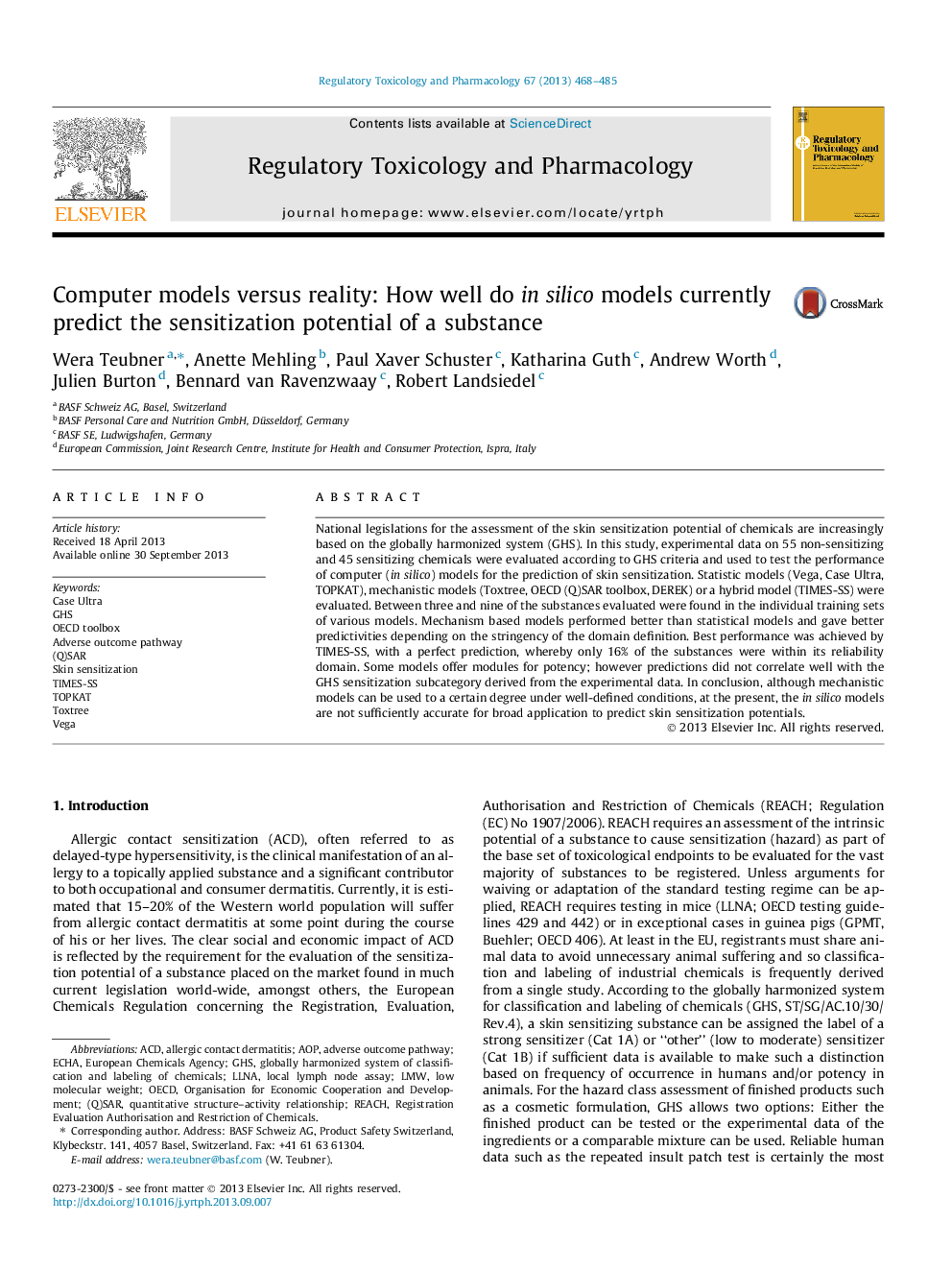| کد مقاله | کد نشریه | سال انتشار | مقاله انگلیسی | نسخه تمام متن |
|---|---|---|---|---|
| 5857461 | 1132007 | 2013 | 18 صفحه PDF | دانلود رایگان |
- In-silico prediction of skin sensitization tested with 100 industrial chemicals.
- TIMES-SS, OECD toolbox, Case Ultra, TOPKAT, Vega, ToxWiz and Toxtree.
- In-silico prediction of potency according to GHS criteria not possible.
- Models following OECD adverse outcome pathway perform better than statistical models.
- Data bases and use for regulatory purposes discussed.
National legislations for the assessment of the skin sensitization potential of chemicals are increasingly based on the globally harmonized system (GHS). In this study, experimental data on 55 non-sensitizing and 45 sensitizing chemicals were evaluated according to GHS criteria and used to test the performance of computer (in silico) models for the prediction of skin sensitization. Statistic models (Vega, Case Ultra, TOPKAT), mechanistic models (Toxtree, OECD (Q)SAR toolbox, DEREK) or a hybrid model (TIMES-SS) were evaluated. Between three and nine of the substances evaluated were found in the individual training sets of various models. Mechanism based models performed better than statistical models and gave better predictivities depending on the stringency of the domain definition. Best performance was achieved by TIMES-SS, with a perfect prediction, whereby only 16% of the substances were within its reliability domain. Some models offer modules for potency; however predictions did not correlate well with the GHS sensitization subcategory derived from the experimental data. In conclusion, although mechanistic models can be used to a certain degree under well-defined conditions, at the present, the in silico models are not sufficiently accurate for broad application to predict skin sensitization potentials.
Journal: Regulatory Toxicology and Pharmacology - Volume 67, Issue 3, December 2013, Pages 468-485
